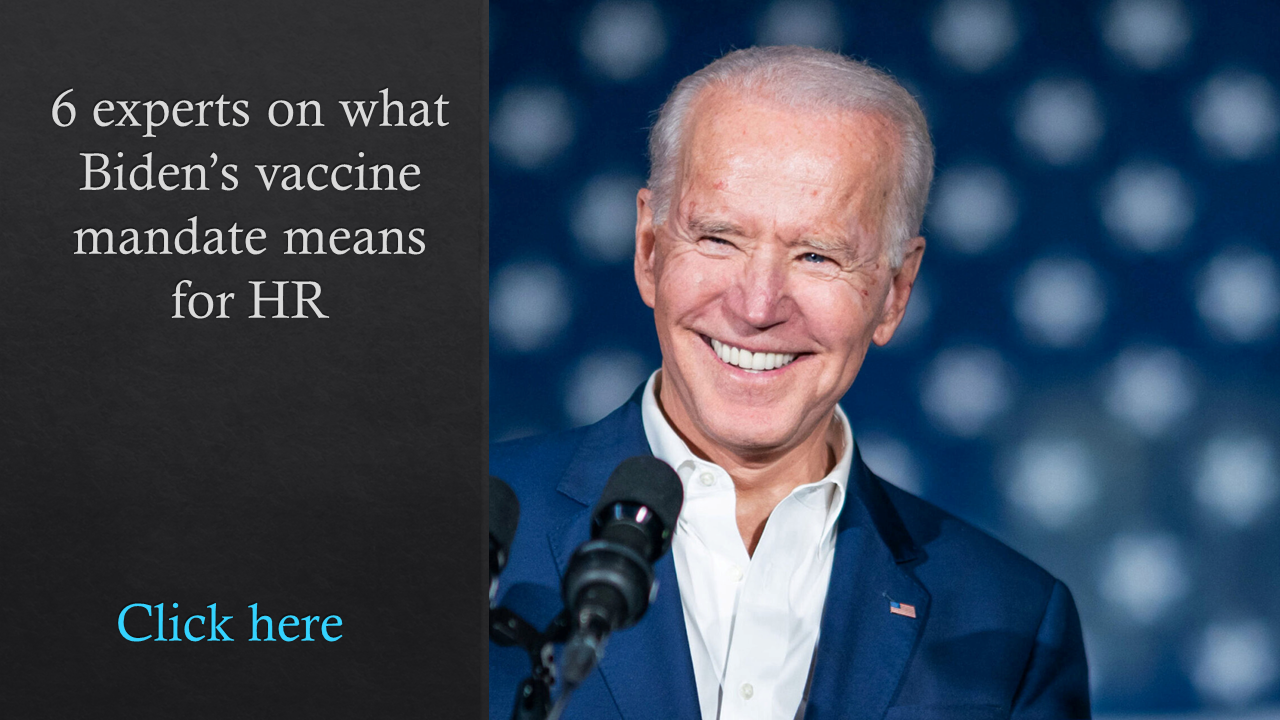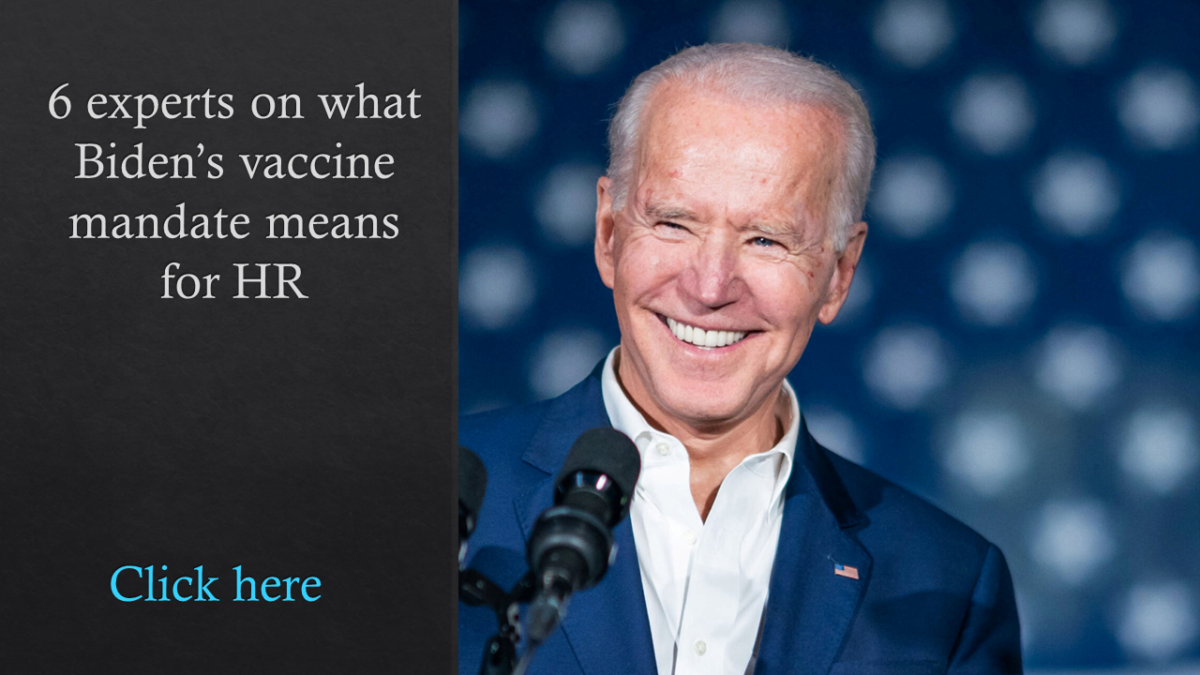After waiting for two months for the release of the official rule (and deadlines) on the Biden administration’s employer vaccine mandate—which the Occupational Safety and Health Administration unveiled Nov. 4—employers can finally move ahead with plans to comply with the rule. But how should they do it? It’s a lot about education, fast decision-making and communication, experts say. Here are five things employers should do now that the rule has been unveiled.
Educate yourself on the rule. First up? Familiarize yourself with the new rule and all that it entails. “I think every employer should read through at least the three simple OSHA resources—the webinar, the fact sheet and the summary. That won’t take more than about an hour,” says Kara Govro, chief HR legal expert at Mineral, an HR consulting firm. It shouldn’t just be HR leaders who read through it, but the president, CEO or CFO, even frontline managers. “You have to have your people get familiar with this,” she says, adding that employers can also send it out to employees if they wish.
Related: 5 expert takeaways from the new OSHA vaccine mandate
Decide what to do—full mandate or allow testing. The mandate requires employers with 100 or more employees to implement a COVID-19 vaccination requirement for their employees—or offer a weekly testing alternative to those who refuse or are unable to receive a vaccine—by Jan. 4, 2022. Of course, employers don’t have to allow testing. As the administrative aspect of allowing employees to test weekly for COVID-19 can be burdensome for employers, many employers may opt for enforcing a vaccine mandate, meaning they would require all their workers to get vaccinated and could fire any unvaccinated employee unless they were exempt from the vaccine requirement for religious or medical reasons.
 Decide who will pay for testing—and how to set it up. If you decide to allow unvaccinated employees to regularly test for COVID-19, you need to decide if you, as the employer, will pay for the testing or if you’ll make employees pay for it. (OSHA said employers do not have to foot the bill.) The choice is up to employers if they will pay for it themselves—which perhaps could prevent their unvaccinated employees from quitting—or if they will force workers to pay for it, which may boost vaccination rates, says Brian Kropp, chief of research in the Gartner HR practice.
Decide who will pay for testing—and how to set it up. If you decide to allow unvaccinated employees to regularly test for COVID-19, you need to decide if you, as the employer, will pay for the testing or if you’ll make employees pay for it. (OSHA said employers do not have to foot the bill.) The choice is up to employers if they will pay for it themselves—which perhaps could prevent their unvaccinated employees from quitting—or if they will force workers to pay for it, which may boost vaccination rates, says Brian Kropp, chief of research in the Gartner HR practice.
Likewise, employers who choose the testing option will need to get that infrastructure up and running, which will take time.
Tell employees your decision. Organizations have to let their employees know what route they will go with in regards to the mandate—and as soon as possible. “If you are choosing to put a mandate in place, it is only fair to give your employees who have not been vaccinated yet as much time as possible to get vaccinated, especially with like the holidays coming up,” Kropp says.
Be thoughtful about communication. Communicating an employer’s vaccine mandate decision is important—and just as vital is communicating the decision well. Experts say there are a number of best practices that employers and HR leaders should follow when it comes to communicating with workers about company vaccine policies, including telling employees as soon as possible; being clear about the reasoning behind a mandate; sharing the merits and safety of getting a COVID-19 vaccine; and laying out the consequences for not abiding by the mandate (with specific dates). And given the polarization that surrounds vaccines and mandates, it’s also in employers’ best interest to be thoughtful about how some employees may be feeling.
“Vaccine mandates are politically polarizing and have become an emotional issue for employees and their families,” says Sydney Heimbrock, chief industry advisor for government at Qualtrics. “That’s why leading with empathy will be key to creating the environment of trust and mutual understanding we need to successfully navigate this new workplace challenge.”
For a full list of communication strategies, read: 9 tips for telling workers about your new vaccine mandate
